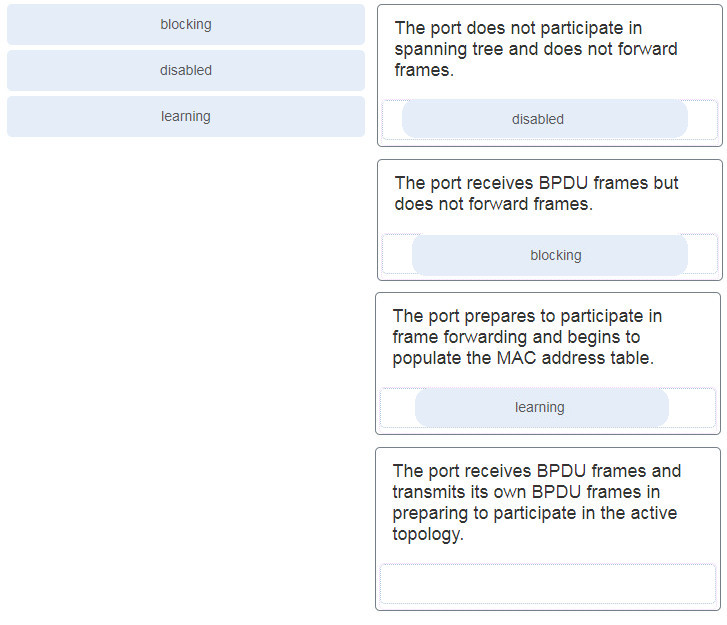Question:
Match the STP port state with the appropriate description. (Not all options are used.)

Explanation:
The details of each port state are shown in the table.
| Port State | Description |
|---|---|
| Blocking | The port is an alternate port and does not participate in frame forwarding. The port receives BPDU frames to determine the location and root ID of the root bridge. BPDU frames also determine which port roles each switch port should assume in the final active STP topology. With a Max Age timer of 20 seconds, a switch port that has not received an expected BPDU from a neighbor switch will go into the blocking state. |
| Listening | After the blocking state, a port will move to the listening state. The port receives BPDUs to determine the path to the root. The switch port also transmits its own BPDU frames and informs adjacent switches that the switch port is preparing to participate in the active topology. |
| Learning | A switch port transitions to the learning state after the listening state. During the learning state, the switch port receives and processes BPDUs and prepares to participate in frame forwarding. It also begins to populate the MAC address table. However, in the learning state, user frames are not forwarded to the destination. |
| Forwarding | In the forwarding state, a switch port is considered part of the active topology. The switch port forwards user traffic and sends and receives BPDU frames. |
| Disabled | A switch port in the disabled state does not participate in spanning tree and does not forward frames. The disabled state is set when the switch port is administratively disabled. |
Exam with this question: CCNA 200-301 Certification Practice Exam Answers
Please login or Register to submit your answer
